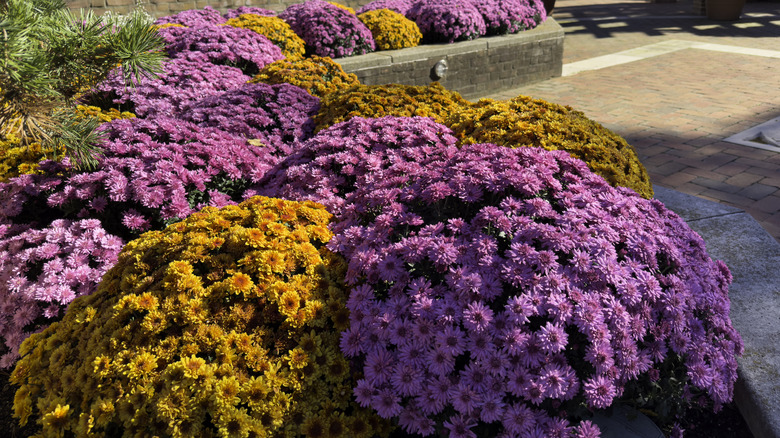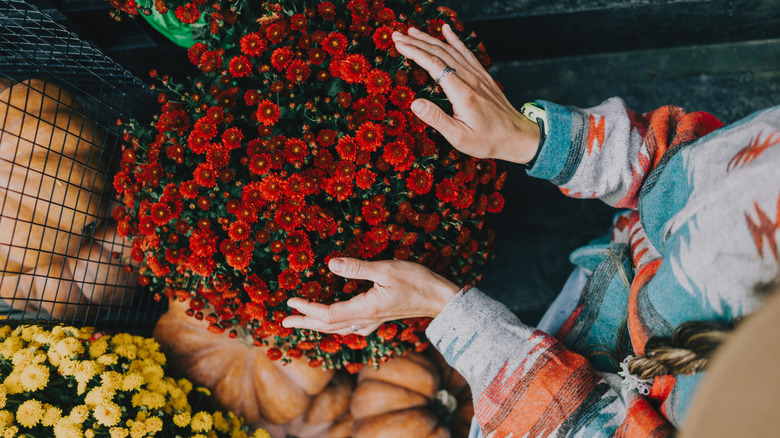Here's Why Timing Is Crucial For Mums To Bloom All Autumn Long
Autumn is a season of changing colors, and nothing captures that transition quite like the cheerful burst of blooms from garden mums (Chrysanthemum x morifolium). If you've ever bought a mum in full flower, only to watch its blooms quickly droop and fade, then you already know that planting them is about more than just putting them in the ground and hoping for the best. How to keep mums alive year round is a common question, and the answer often comes down to two things: temperature and timing.
To have mums around for future seasons, you need to choose a perennial variety and plant them in the ground six to eight weeks before the first frost so their roots have enough time to take hold. If you're using them for seasonal color in pots, make sure to plant them at a time that will give you the best autumn blooms.
Mums thrive in temperatures between 62 and 75 degrees Fahrenheit. Since they don't do well in the heat of summer, the best time to plant them for an autumn bloom is from late August to early September, unless you live in a very warm southern region. Choosing a hardy variety and planting it early enough to become established before the ground freezes solid is the key to enjoying mums every year.
Why mums need time to settle
In order for mums to reliably return year after year, they need to develop a strong root system before the start of the cold winter months. Planting in early fall gives the plants the time to grow and spread throughout the soil. This is important for the hardy garden mum varieties that are designed to withstand colder temperatures. A mum planted late in the season, just before the ground freezes, will not have time to settle in and will have a much lower chance of survival. This is an important item to remember for any gardener's fall to-do list.
The goal is to get the plant's roots to anchor themselves deep enough to resist the heaving action that can happen when the ground goes through multiple freeze and thaw cycles, forcing a plant's roots up and out of the soil. Providing the proper care in the weeks following planting, such as consistent watering and a thick layer of mulch, helps to insulate the roots against sudden temperature changes. This type of prep work in the early autumn pays off by protecting the plant through its dormant season, setting the stage for a healthy return in the spring.
The difference between annual and perennial care
A common mistake with fall mums is to treat them all as if they will return the following year. Many of the mums available at garden centers and grocery stores are popular florist varieties that are not bred to handle cold weather. These are considered temporary decorative plants, similar to summer annuals, and are unlikely to survive a winter outdoors, especially in colder climates. It's important to choose a perennial variety and provide the right care for it to thrive.
In addition to putting them in the ground with enough time for them to grow their roots, you also need to consider their specific needs during the colder months. Some growers recommend leaving the dead stems and leaves on the plant until spring to provide natural insulation, while others advise cutting the plant back and applying a thick mulch of straw, leaves, or pine needles to the top of the soil. Proper drainage is also important, since waterlogged soil can kill a dormant mum. By understanding the difference between the varieties and providing the right growing environment at the right time, you can extend your enjoyment of these beautiful flowers far beyond a single season.


